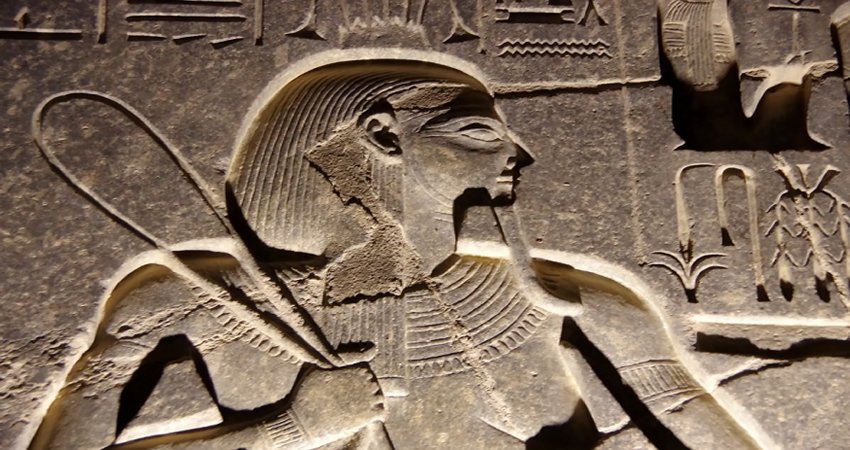The Ancient Tradition And True Meaning Of Candy Canes
Ellen Lloyd – MessageToEagle.com – Have you ever wondered what’s behind the ancient Christmas tradition and the true meaning of candy canes? Due to the J-shape, many people associate candy canes with the name Jesus, but that is wrong. The shape was meant to represent the crooks of the shepherds to whom the angel announced the first Nativity.
The candy cane began as an all-white, straight, sugar treat, and is believed to have been invented by French priests in the early part of the 15th century.
The choirmaster purportedly passed out the confections to young children attending the services at the living creche, or Nativity scene, in order to keep them quiet during the long ceremony. Due to their success in hushing youngsters, their appeal to the taste buds, or perhaps a combination of both, the custom of passing out the treats at such ceremonies spread.

By the 16th century, the decorating of Christmas trees, which had begun in Germany, had become popular in other parts of Europe as well. Early trees were adorned with fruits, colored paper, flowers, and candy. The straight, white sticks of candy were one of the items used in garnishing the trees.
The tradition was brought to Ohio, USA by August Imgard, a German immigrant, who is generally credited with being the first person in America to decorate a Christmas tree with candy canes. Gregory Keller, a Catholic priest and brother-in-law of Bob McCormack, invented the first candy cane machine. Bob McCormack’s company, Bob’s Candies, then became the major candy cane manufacturer. In time candy canes grew in size. The largest candy cane ever created was made by candy shop owner Paul Ghinelli in 2001. It measured in at 58 ft. and 2.25 inches (17.74 meters).
Shaped sugar treats were probably the earliest form of candy. Families that could afford and have access to sugar, corn syrup, cream of tartar, flavoring, and coloring made candy canes at home.
The colored stripe and flavor were added much later in the candy cane’s history. The curve at the top of the cane, making it look like a shepherd’s crook was not intended to make it easy to hang on people’s Christmas trees, as some people think.
Needless to say, candy canes have become popular not only among children but also adults which are also the reason why approximately 1.76 billion candy canes are produced every year.
First version of this article was originally published on December 24, 2015
Written by – Ellen Lloyd – MessageToEagle.com Senior Staff Writer
Copyright © MessageToeagle.com All rights reserved. This material may not be published, broadcast, rewritten or redistributed in whole or part without the express written permission of MessageToeagle.com
Expand for referencesRelated Posts
-
 Japan’s Sacred Island Of Yakushima: Remarkable Treasures Of Nature Surrounded By Myths And Legends
No Comments | Nov 1, 2016
Japan’s Sacred Island Of Yakushima: Remarkable Treasures Of Nature Surrounded By Myths And Legends
No Comments | Nov 1, 2016 -
 Rare Discovery Of More Than 18,000 Inscribed Pot Sherds Document Life In Ancient Egypt
No Comments | Jan 31, 2022
Rare Discovery Of More Than 18,000 Inscribed Pot Sherds Document Life In Ancient Egypt
No Comments | Jan 31, 2022 -
 Shining Ones, Archimedes Death Ray And Mystery Of Vitrified Forts In Scotland
No Comments | May 13, 2015
Shining Ones, Archimedes Death Ray And Mystery Of Vitrified Forts In Scotland
No Comments | May 13, 2015 -
 Beowulf Is Much Older Than Previously Thought And Not An English Poem – Professor Says
No Comments | Jan 7, 2020
Beowulf Is Much Older Than Previously Thought And Not An English Poem – Professor Says
No Comments | Jan 7, 2020 -
 Surprising Diversity Of Ethnic Groups In The US Virgin Islands Before Columbus – New Study
No Comments | May 18, 2023
Surprising Diversity Of Ethnic Groups In The US Virgin Islands Before Columbus – New Study
No Comments | May 18, 2023 -
 Ancient Egyptians Knowledge Of Psychiatry – Importance Of The Sorcerer And The Mysterious Zar Dance
No Comments | Apr 24, 2020
Ancient Egyptians Knowledge Of Psychiatry – Importance Of The Sorcerer And The Mysterious Zar Dance
No Comments | Apr 24, 2020 -
 Startling Discovery Of Nubian Levallois Technology In Shukbah Cave Re-Writes Ancient History Of Neanderthals And Homo Sapiens
No Comments | Feb 24, 2021
Startling Discovery Of Nubian Levallois Technology In Shukbah Cave Re-Writes Ancient History Of Neanderthals And Homo Sapiens
No Comments | Feb 24, 2021 -
 Newly Described Species Of Dome-Headed Dinosaur May Have Sported Bristly Headgear
No Comments | May 24, 2023
Newly Described Species Of Dome-Headed Dinosaur May Have Sported Bristly Headgear
No Comments | May 24, 2023 -
 Motilla del Azuer: Impressive And Unusual 3,200-Year-Old Fortress In The Iberian Peninsula
No Comments | Jul 11, 2016
Motilla del Azuer: Impressive And Unusual 3,200-Year-Old Fortress In The Iberian Peninsula
No Comments | Jul 11, 2016 -
 Ancient Symbol Seed Of Life Contains Hidden Secrets Of The Seven Days Of Creation
No Comments | Jun 3, 2017
Ancient Symbol Seed Of Life Contains Hidden Secrets Of The Seven Days Of Creation
No Comments | Jun 3, 2017

